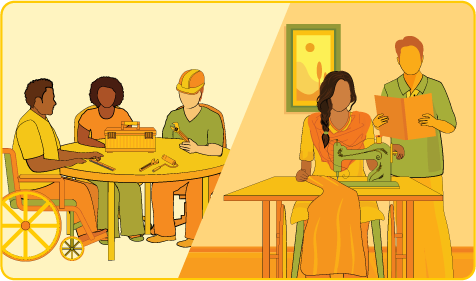Vocational Training - Steps for Living


Vocational training – News, Research and Analysis – The Conversation – page 1
Kentucky Career Center Carl DPerkins Vocational Training Fundamentals Explained
Postsecondary occupation schools, likewise called trade schools, offer an academic choice other than community colleges and four-year colleges. They likewise help older students who wish to advance or alter their careers. Frequently these schools cater to the requirements of working adults by providing classes in the evening or online. Trade schools offer both degree programs and occupation certificates.
Trade schools also teach students technological, culinary, and healthcare abilities. Some trade schools use apprenticeships too. Recognizing the need for more skilled workers in the information-based economy, the Carl D. Perkins Vocational and Technical Education Act of 1998 approved money to postsecondary schools to develop and improve occupation programs.

Evaluate Sociological Perspectives on Vocational Education (30) – ReviseSociology
Postsecondary institutions that receive the funds have the flexibility to create services to satisfy the requirements of their students. School guidance offices have details on trade schools. 2 thorough online resources, and http://www. trade-school. org, also list trade schools and the courses they use. Organizations listed include mechanical and vehicle schools, organization schools, culinary schools, art and style schools, diving schools, cosmetology schools, education programs, healthcare schools, legal and criminal justice schools, schools concentrating on professions in the media, realty schools, innovation schools, and travel and tourist schools.
They likewise provide their trainees with help in conference required licensing requirements. OTHER CHANCES FOR OCCUPATION TRAINING Trade programs at both the secondary and postsecondary levels differ in their quality and efficiency. While graduation from a good trade program or trade school can greatly enhance one's work outlook, there are other ways to get specific occupational training.
Not known Facts About Career and Vocational Courses for Prisoners
Apprenticeships Finishing an apprenticeship is an alternative to standard trade training. Apprenticeships are most common for extremely proficient production or building and construction jobs, however are offered for more than 850 occupations in numerous industries. Typical programs train people to be boilermakers, bricklayers, carpenters, electrical contractors, firemens, machinists, millwrights, plumbing professionals, roofers, telecommunications specialists, and tool and pass away makers.


Ideal types of vocational training systems - Download Table
Apprenticeships integrate on-the-job training with classroom direction. Apprentices are paid while on the task. Read More Here take 4 to six years to complete, although some can be finished in as low as one year. Because apprenticeships are paid programs, competition for offered slots is frequently fierce. About twenty-nine thousand apprenticeship programs exist across the country.
